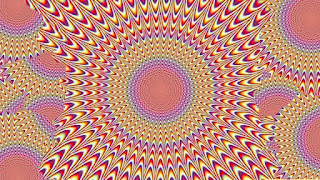In our daily existence, we're swayed by perceptions, not mere illusions. These perceptions, reflections of our cognitive reality, are more than just a figure of speech. Despite the cynicism this thought may provoke, scientifically, it illustrates the astounding capacity of our brains to construct complex cognitive realities from minimal stimuli, and surprisingly, be tricked by them.
Throughout history, this intricate relationship between our mind and reality has intrigued scholars, forming the foundation of 'perfection.' Mathematical constants, Fibonacci sequences, spirals, circles, spheres, and the golden ratio are human endeavors to decode nature's rules and mimic them.
In the constant struggle between the idealized and the real, theories and studies have triumphed, giving birth to ancient texts that explored the concept of concentricity in relation to the world's image. Armillary spheres, or spherical astrolabes, are an apt example of this, representing various cosmological and geographical aspects like the equator, meridians, and planes of the ecliptic.
The 16th and 17th centuries marked a significant step in visual studies, as refined explorations of perspective emerged, resulting in intricate creations such as 'anamorphoses.' These are optical illusions that create recognizable forms from distorted lines viewed from specific angles or through deforming mirrors.
Sometimes, the objective is to convey movement. Here, the viewer's mind plays a special role, becoming an integral part of the artwork's perception process. The art of illusion thus becomes a game for the artist, with science as their secret accomplice.
The final milestone is the concept of 'perception psychology.' It is the understanding of how the eye and brain collaborate to perceive the world around us. Initially, an empirical attempt by artist-scientists, this concept became a major psychological stream in the early 20th century, emphasizing the academic aspect of perception.
Known worldwide as Gestalt theory, this "doctrine" in Italy counts among its exponents such names as Vittorio Benussi (Trieste, 1878 - Padua, 1927) and his student Cesare Musatti (Dolo, 1897 - Milan, 1989). They devoted themselves to several research topics in this field, in particular with regard to the so-called stereokinetic phenomena (that is, those involving three-dimensional perception generated by two-dimensional objects in motion).
But the most important contribution seems to have been that of Fabio Metelli (Trieste, 1907 - Padua, 1987), who carried out a real experimental study of visual perception in order to gain a deeper understanding of transparencies. This research, after being duly recognized by the international scientific community, found success in the publication of an article in "Scientific American".
It remains incredible to think how much study and science can be hidden behind a single drawn line and its curvature. What is certain, however, is that the eye remains one of our most important windows on reality and, however deceptive, the source of many fulfilling sensations.
That's why we, at free AstroScience, don't want to stop using sight to provoke emotions through science. In this way, between illusions and beauties, every glance can continue to shine.


Post a Comment